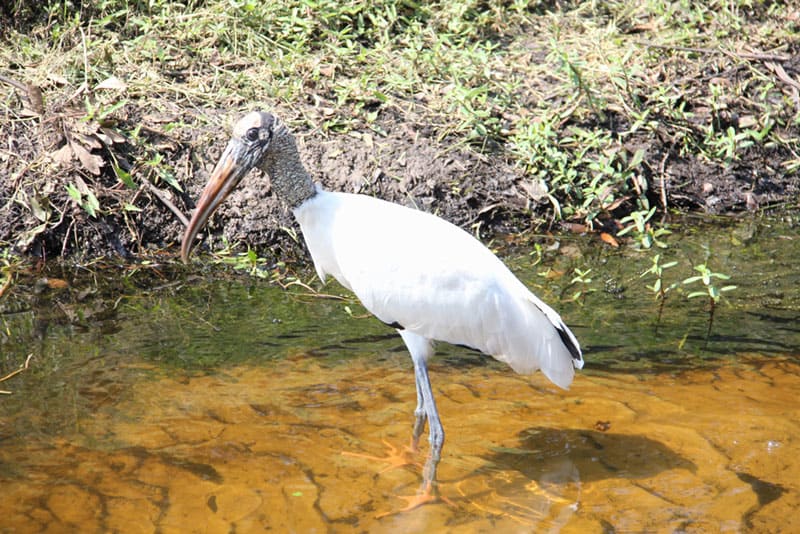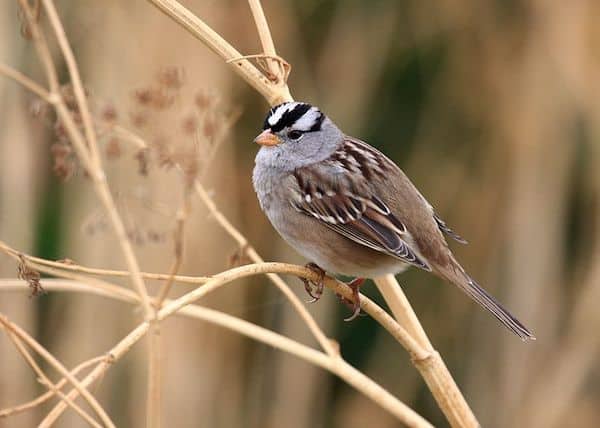Look For
A very large bird with a white body and wings that are starkly black and white. It stands over a meter tall at 40 inches. The large down-curved bill and gnarled, featherless head make the wood stork a candidate for “ugliest bird.” Wood storks are strong, if slow, fliers and are frequently seen soaring high overhead. The wood stork is much larger than the white ibis; has a dark head, unlike the white egrets; and wades instead of swimming, like the much larger white pelican does.
Listen For
Wood storks are mostly silent except for some hissing and bill clattering in nesting colonies.
Find It
Wood storks are the only storks and largest wading birds that breed in the United States. Commonly found in southern swamps, lagoons, ponds, and roadside ditches. Colonies nest in large stands of trees, such as cypress. Populations are declining throughout the Southeast because of habitat destruction and alteration.
Feeding Behavior
The wood stork is tactile in its feeding. It captures its food by feel rather than sight. Walks slowly through the water then quickly snaps its bill to capture its prey. A wood stork’s strike time is twice as fast as its prey’s startle time. Primarily feast on fish but you will also find crabs, snakes, frogs, birds, and small mammals when examining the contents of a wood stork’s stomach.
Nesting Behavior
The male wood stork usually selects the nesting site prior to courtship. Nest is made bulky and large located in woody vegetation over water or on islands. Clutch size is one to five eggs. Both male and female incubate for a month. Young can take up to two months before fledging.
Wow!
The wood stork is North America’s only native stork, but it’s not the stork of the baby-delivery myth—that’s the European stork, which nests on rooftops and chimneys throughout Europe.




